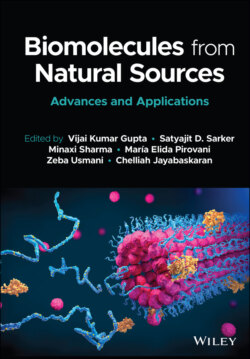Читать книгу Biomolecules from Natural Sources - Группа авторов - Страница 50
2.3.3.1.1 Proteases
ОглавлениеUp to the 1980s, proteases were considered the only commercially relevant enzymes. Today, many laundry-detergent products contain at least a protease, and many contain cocktails of enzymes including proteases, amylases, cellulases, and lipases [100]. The major source of proteases is microorganisms while proteases from plant origin have not been well investigated. Based on their catalytic mechanisms, proteases can be classified into Ser, Cys, Aspartic and metalloproteases. In nature, proteases have valuable biochemical and physiological functions. They can be very specific, not only cleaving proteins into amino acids or short peptides but also can cleaved specifically to produce useful peptides. Bacillus licheniformis, Bacillus subtilis and Bacillus pumilus are the most well-known species used in industry for alkaline protease production [104]. Proteases were used widely in many industrial applications included detergent, wool quality improvement, meat tenderization, leather, etc. Ideally, proteases used in detergent formulations should have high activity and stability within a broad range of pH and temperatures, and should be compatible with various detergent components along with oxidizing and sequestering agents [105].
Protein engineering was used to improve the stability of BPN’ from Bacillus amyfoliquefaciens in the chelating environment of the detergent by deleting the strong calcium-binding site (residues 75–83) and re-stabilizing the enzyme through interactions not involving metal ion binding. Stability increases of greater than 1000-fold in EDTA were reported for this protease [106]. The surface properties of BPN’ have also been engineered. It was found that variants containing mutations that produce negative charges in the active site region of the molecule adsorbed less strongly and gave better laundry performance.
